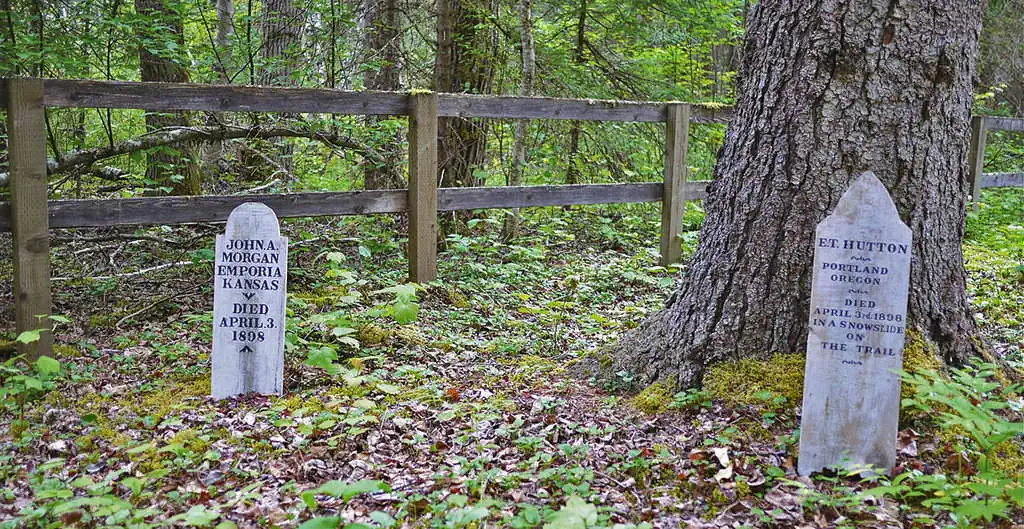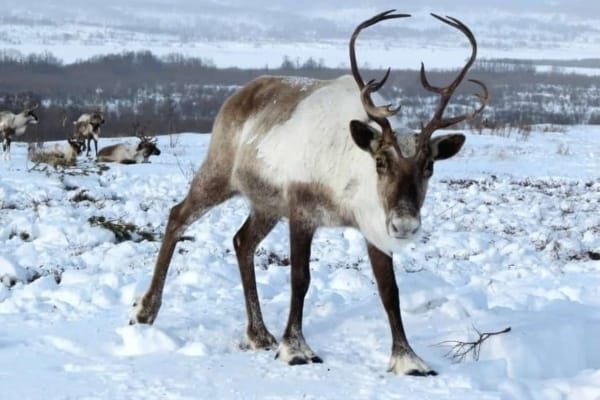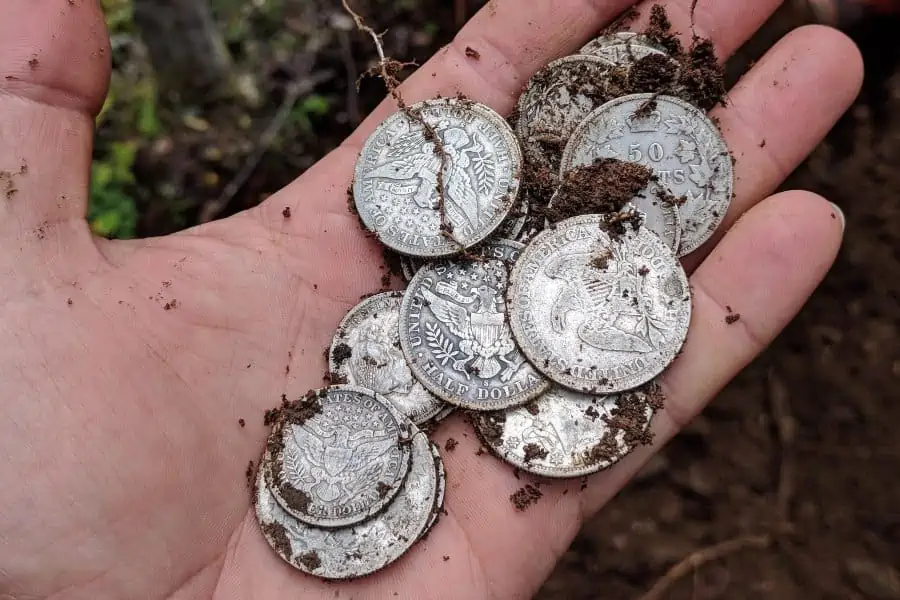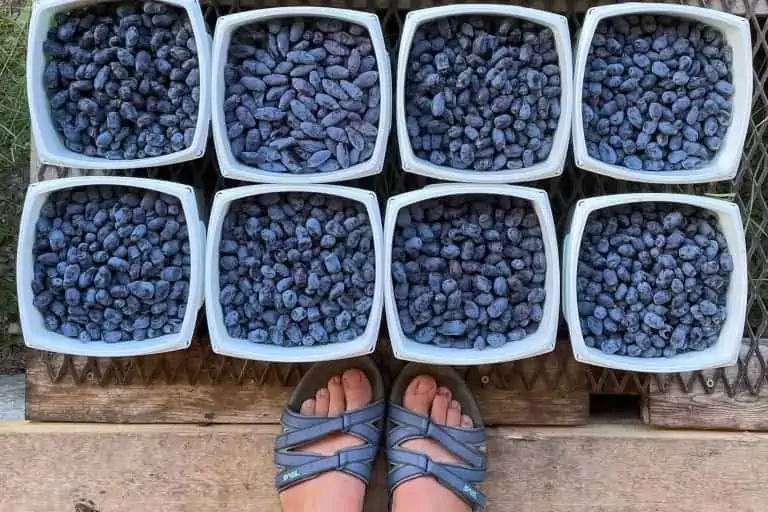Two prominent American tourism publications hit the streets recently. Neither included much of a mention of Dyea, except to list the Dyea Campground in Skagway and note that it is the start of the Chilkoot Trail to the Klondike. Considering your roving RV reporter proclaimed from the top of the Golden Stairs last summer that my favourite RV campsite in all 586,412 of the square miles of Alaska was the free campground on the magnificent tidal flats of Dyea, this struck me as a mad irony at best, or a glaring editorial omission at worst. It was like forgetting to invite Grandpa to the family reunion.
Dyea is where it all began (at least, in the Klondike version of the northern histories in Yukon and Alaska) and it’s as close as it gets to sacred ground in all of the North. Every spring, I dig my RV travel trailer out of a snowbank and head towards Dyea to launch the new camping season. This year, it was on April 2 after failing to get over the mountains on the last day of winter, March 19, because the road was closed by avalanches. Thus, this season opened at Log Cabin, which is in B.C., on a closed road with zero traffic, in between alpenglows on both ends of darkness with only a pair of hungry ravens for company.
The first place I always stop in Dyea is the slide cemetery, where I pay my respects to the first casualties of the Gold Rush, almost all of whom were young men from Washington, Oregon and California. They were the earliest arrivals among the stampeders who were trying to beat the crowds to the Klondike and perished in the April 3, 1898 avalanche at Sheep Camp on the Chilkoot which killed over 70 stampeders. Until that fateful day, it was assumed Dyea would be developed into a year-round port with its own railroad climbing up to the Yukon lake country, the headwaters of the Yukon River. The Chilkoot Pass suddenly developed a dangerous reputation and the big railroad financiers began considering nearby Skagua (original Indigenous name), which was a natural deep water port with a longer but more gradual climb over the mountains via White Pass. Dyea, which had never been formally incorporated as a town, had a chamber of commerce and was declared a federal port in 1897, a designation it lost in 1900 when its customs officials were sent to the next big gold strike in Nome.

The beginning of the end of Dyea came with that snowslide which tilted the terminus battle in Skagway’s favour. At the time, Dyea had “reached its zenith in about May 1898, at which time the town had a population estimated at 5,000 to 8,000 people, served by 48 hotels, 47 restaurants, 39 saloons and 19 freighting companies,” according to Murray Lundberg in his site, ExploreNorth.
“Although aerial tramways had been built across the worst part of the Chilkoot Pass and a railway was on the drawing board, the first WP&YR (construction) train to leave Skagway on July 20, 1898, signalled that the race between the two towns was almost over.”
There is no doubt the vast majority of stampeders, estimated to be 30,000, in 1897/98 used the Chilkoot rather than White Pass to reach the Klondike goldfields, but it’s been all Skagway ever since.
The post office closed in June 1902. By 1903, less than half a dozen people occupied the remains of the old Dyea townsite.
Between then and now, Dyea spent most of the 20th century doing little more than slowly rising, literally, as the Taiya River valley gains roughly four centimetres of elevation every year due to tectonic activity deep down.
Kathy and Fred Hosford, proprietors of the beautiful Chilkoot Trail Outpost (cabins, B&B and restaurant) provide the only housing in the valley, and maybe the best breakfast in the world. Kathy is a well-known local Republican and was one of 28 Alaskans who nominated the current president at the 2016 convention in Cleveland, Ohio. She is an unabashed Trumpster and even has a pickup used by her yard crew which has “Palin” on the Alaska vanity plates. She says she supported him because his grandfather, Fred Trump, came through Dyea on the way to making his fortune ($582,000 USD) at Bennett and Whitehorse in 1897. Her husband, Fred, is a Vietnam veteran who served in the Army at Chu Lai in the late 60s. She and I enjoyed several wonderful breakfasts, talking American politics. The grub was grand and she has a great sense of absurd humour to go with her winning smile and hot cooking.
The other oddity about Dyea in 2019 is the presence of a high-altitude zipline on the other side of the valley across the tidal flats. The irony of a high-speed modern zipline in a ghost town famous for its proximity to the steep climb up the Golden Stairs of Chilkoot Pass is too difficult to digest and discuss … so I won’t.
There is a ragged forest service campground just across the road from Kathy and Fred’s place, but not many have time to escape the cruise ship madness of nearby Skagway, where each arriving vessel is said to be carrying $1 million per day in retail and service revenue for Skagway, some of which finds its way to our beloved Dyea.
The number of 15-seat mini-buses scurrying back and forth every day with tourists is appalling, but they never bother the serious RVers camping on the secluded tidal flats. Those campers know that the true purpose of visiting Dyea in 2019 is to listen to the tide coming and going and what the myriad of waterfowl are saying about it.
How any rational publications can discuss northern historical tourism without a full mention of Dyea is beyond my aging comprehension, much like asking “Where the hell is Grandpa?!” when lining everybody up for the family reunion photo. “OOPS!”




